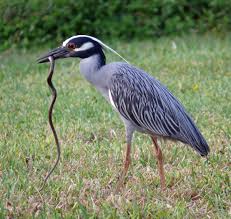Mini Sheet: Birds Definitives sheet (Tonga 2012)
Birds Definitives sheet (Tonga 2012)
06 February (Tonga ) within release Birds Definitives goes into circulation Mini Sheet Birds Definitives sheet face value 49.75 Tongan pa'anga
| Mini Sheet Birds Definitives sheet in catalogues | |
|---|---|
| Michel: | Mi: TO 1742-1753KB |
Mini Sheet is horizontal format.
Also in the issue Birds Definitives:
- Stamp - White-faced Heron (Egretta novaehollandiae) face value 2.50;
- Stamp - Maroon Shining Parrot (Prosopeia tabuensis) face value 60;
- Stamp - Polynesian Triller (Lalage maculosa) face value 4;
- Stamp - Swamp Harrier (Circus approximans) face value 10;
- Stamp - Collared Kingfisher (Todiramphus chloris) face value 2.40;
- Stamp - Greater Wattled Honeyeater (Foulehaio carunculatus) face value 3.40;
- Stamp - Western Barn Owl (Tyto alba) face value 5;
- Stamp - Polynesian Starling (Aplonis tabuensis) face value 2.70;
- Stamp - Buff-banded Rail (Gallirallus philippensis) face value 6.60;
- Mini Sheet - Birds Definitives sheet face value 49.75;
- Stamp - Grey-necked Wood Rail (Aramides cajaneus) face value 3;
- Stamp - Australasian Swamphen (Porphyrio melanotus) face value 7.30;
Mini Sheet Birds Definitives sheet it reflects the thematic directions:
Animals are multicellular, eukaryotic organisms of the kingdom Animalia (also called Metazoa). All animals are motile, meaning they can move spontaneously and independently, at some point in their lives. Their body plan eventually becomes fixed as they develop, although some undergo a process of metamorphosis later on in their lives. All animals are heterotrophs: they must ingest other organisms or their products for sustenance.
Birds (Aves), a subgroup of Reptiles, are the last living examples of Dinosaurs. They are a group of endothermic vertebrates, characterised by feathers, toothless beaked jaws, the laying of hard-shelled eggs, a high metabolic rate, a four-chambered heart, and a strong yet lightweight skeleton. Birds live worldwide and range in size from the 5 cm (2 in) bee hummingbird to the 2.75 m (9 ft) ostrich. They rank as the class of tetrapods with the most living species, at approximately ten thousand, with more than half of these being passerines, sometimes known as perching birds. Birds are the closest living relatives of crocodilians.
Birds of prey or predatory birds, also known as raptors, are hypercarnivorous bird species that actively hunt and feed on other vertebrates (mainly mammals, reptiles and smaller birds). In addition to speed and strength, these predators have keen eyesight for detecting prey from a distance or during flight, strong feet with sharp talons for grasping or killing prey, and powerful, curved beaks for tearing off flesh. Although predatory birds primarily hunt live prey, many species (such as fish eagles, vultures and condors) also scavenge and eat carrion
Herons are long-legged, long-necked, freshwater and coastal birds in the family Ardeidae, with 72 recognised species, some of which are referred to as egrets or bitterns rather than herons. Members of the genera Botaurus and Ixobrychus are referred to as bitterns, and, together with the zigzag heron, or zigzag bittern, in the monotypic genus Zebrilus, form a monophyletic group within the Ardeidae. Egrets do not form a biologically distinct group from herons, and tend to be named differently because they are mainly white or have decorative plumes in breeding plumage. Herons, by evolutionary adaptation, have long beaks.
Owls are birds from the order Strigiformes, which includes over 200 species of mostly solitary and nocturnal birds of prey typified by an upright stance, a large, broad head, binocular vision, binaural hearing, sharp talons, and feathers adapted for silent flight. Exceptions include the diurnal northern hawk-owl and the gregarious burrowing owl.
Parrots (Psittaciformes), also known as psittacines (/ˈsɪtəsaɪnz/), are birds with a strong curved beak, upright stance, and clawed feet. They are classified in four families that contain roughly 410 species in 101 genera, found mostly in tropical and subtropical regions. The four families are the Psittaculidae (Old World parrots), Psittacidae (African and New World parrots), Cacatuoidea (cockatoos), and Strigopidae (New Zealand parrots). One-third of all parrot species are threatened by extinction, with a higher aggregate extinction risk (IUCN Red List Index) than any other comparable bird group Parrots have a generally pantropical distribution with several species inhabiting temperate regions as well. The greatest diversity of parrots is in South America and Australasia






